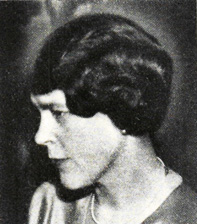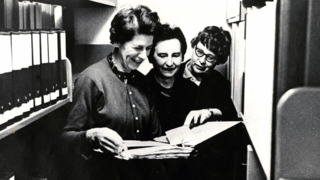
Gothenburg is the second-largest city in Sweden, after the capital Stockholm, and the fifth-largest in the Nordic countries. Situated by the Kattegat on the west coast of Sweden, it is the gubernatorial seat of Västra Götaland County, with a population of approximately 600,000 in the city proper and about 1.1 million inhabitants in the metropolitan area.

The University of Gothenburg is a university in Sweden's second largest city, Gothenburg. Founded in 1891, the university is the third-oldest of the current Swedish universities and, with 53,624 students and 6,707 staff members, it is one of the largest universities in the Nordic countries.

Svenska Dagbladet, abbreviated SvD, is a daily newspaper published in Stockholm, Sweden.

Göteborgs-Posten, abbreviated GP, is a major Swedish-language daily newspaper published in Gothenburg, Sweden.

The Gothenburg School of Business, Economics and Law at the University of Gothenburg is one of Sweden's leading business schools, located in Gothenburg. It was founded in 1923 as an independent business college and is situated in the centre of the city. In 1961, it was integrated into the state-run university system, still as a separate college, but was then integrated into the University of Gothenburg in 1971.

Leif Pagrotsky is a Swedish politician, economist, and diplomat. He served as Minister of Culture from 2004 to 2006 and Minister for Business and Industry from 2002 to 2004 under Prime Minister Göran Persson. After this, he held the position of Consul General of Sweden in New York City from 2016 to 2018.
Lars Christopher Gillberg is a professor of child and adolescent psychiatry at Gothenburg University in Gothenburg, Sweden. He has been a visiting professor at the universities of Bergen, New York, Odense, St George's, San Francisco, and Glasgow and Strathclyde. Gillberg is the founding editor of the journal European Child & Adolescent Psychiatry.
DAMP is a psychiatric concept conceived by Christopher Gillberg defined by the presence of five properties: problems of attention, gross and fine motor skills, perceptual deficits, and speech-language impairments. While routinely diagnosed in Scandinavian countries, the diagnosis has been rejected in the rest of the world. Minor cases of DAMP are roughly defined as a combination of developmental coordination disorder (DCD) and a pervading attention deficit.

The Bellevue Mosque is a mosque in Gothenburg, Sweden. It is located at Generalsgatan 2A in the "Bellevue" district of Gothenburg. The mosque is administered by the Somali-dominated Islamic Sunni Centre Denomination and advocates the Salafi movement of Islam. It was created with funds from Saudi Arabia.
KvinnSam - National Resource Library for Gender Studies, formerly the Women's History Collections, is the Swedish National Resource Library for Gender Studies. The collections belong to Gothenburg University Library.

Somalis in Sweden are citizens and residents of Sweden who are of Somali ancestry or are Somali citizens. A large proportion of Somalis in Sweden emigrated to Sweden due to the Somali Civil War. Most Somalis in Sweden arrived to the country after the year 2006.

Tora Garm-Fex (1890–1973) was a Swedish journalist and writer. She was born in1890, Vänersborg, Sweden to N.O. Jonzon, Håbol (1852–1922) and Emma Carolina Strömberg (1856–1924) and married in 1921 to Filip Fex, Stockholm.

Swedish Doctors for Human Rights (SWEDHR), is a Sweden-based non-governmental organization (NGO) that previously researched and published opinion pieces on international affairs, and campaigned in support of doctors and anti-war activists persecuted or imprisoned on issues of civil liberties and freedom of expression. SWEDHR claimed to shed light on "health issues of war crimes & Human Rights abuses worldwide",[1] and it acknowledged to be an “alternative NGO” with regard to mainstream organizations. Ensuing, the views presented in its publications tended to differ from, or contradicted, those of Human Rights Watch, Amnesty International Sweden and other organizations. Up to mainly 2019, SWEDHR's primary focus has been the Julian Assange international case. During 2020 and onwards, the focus of the organization has been solely on issues around the Covid-19 pandemic.

Karin Johannisson was a Swedish idea historian who was Professor of the History of Science and Ideas at Uppsala University. She was a member of the Royal Swedish Academy of Sciences.

Svenny Kopp is a Swedish psychiatrist at Queen Silvia Children's Hospital, in Gothenburg. Her research is primarily focused on neuropsychiatric disorders in children and adolescents. Kopp studied for her doctorate at the Institute of Neuroscience and Physiology at the Sahlgrenska Academy at the University of Gothenburg. In her thesis, titled the "Girl Project", found that girls with signs of autism and ADHD are often not taken seriously and misdiagnosed by professionals.

Asta Ekenvall was a Swedish librarian, one of the founders of the Kvinnohistorisk arkiv of the University of Gothenburg and a pioneer in research and philosophy of women's history.
Helen Minnis is a Professor of Child and Adolescent Psychiatry at the University of Glasgow. She studies reactive attachment disorder and other developmental conditions.
The Autism – Tics, ADHD, and other Comorbidities Inventory (A–TAC) is a psychological measure used to screen for other conditions occurring with tics. Along with tic disorders, it screens for autism spectrum disorders, attention deficit hyperactivity disorder (ADHD) and other conditions with onset in childhood. The A-TAC has been reported as valid and reliable for detecting most disorders in children. One telephone survey found it was not validated for eating disorders.

Lisbeth Helena Larsson (1949–2021) was a Swedish literary historian and researcher who from 2000 was professor of literary studies at the University of Gothenburg where she focused on gender studies. Drawing on the archive of women's history at the Arts Faculty Library, she published a book on women from Gothenburg, Hundrade och en Göteborgskvinnor. It paved the way for a grant from the Bank of Sweden Tercentenary Foundation which in March 2018 led to the establishment of Svenskt kvinnobiografiskt lexikon, a searchable biographical dictionary of Swedish women. Larsson is also remembered as a theatre and literature critic for the newspaper Expressen.

Vivi Sylwan was a Swedish textile historian and textile curator at the Röhsska Museum in Gothenburg.














